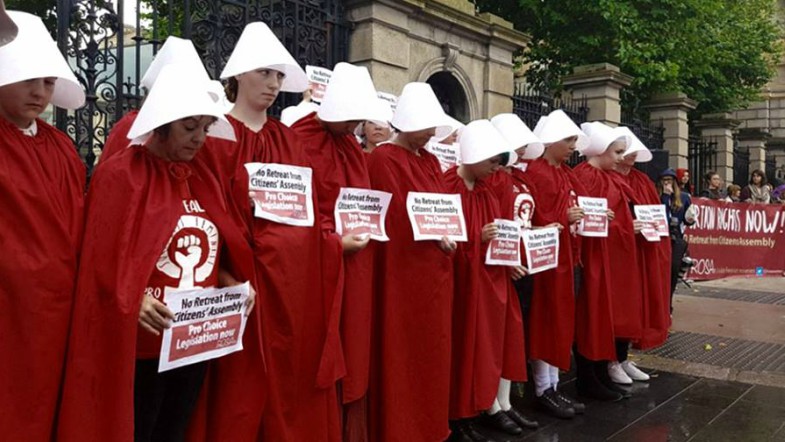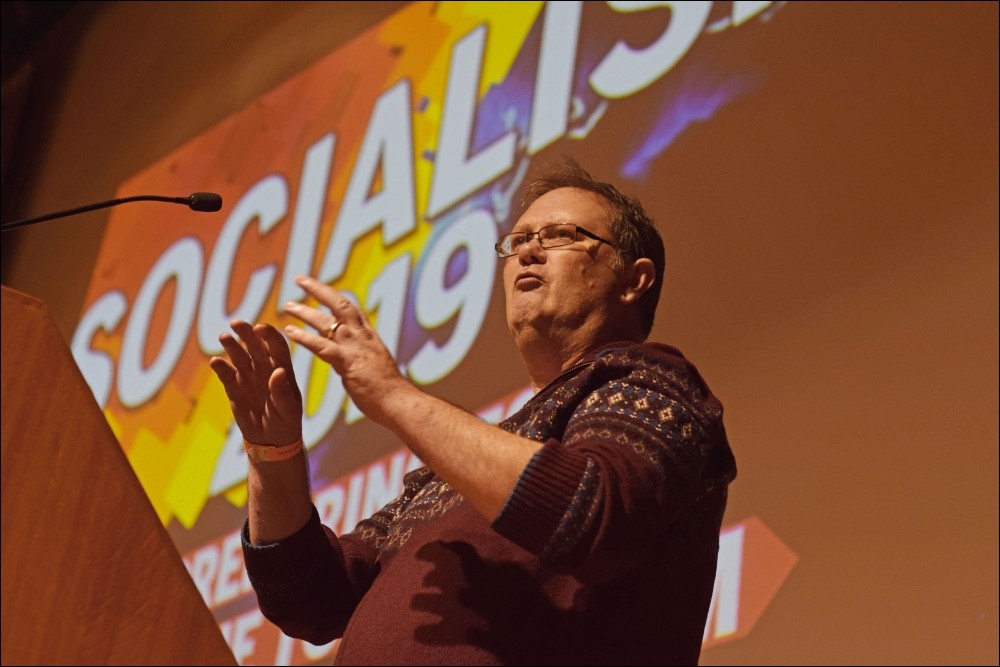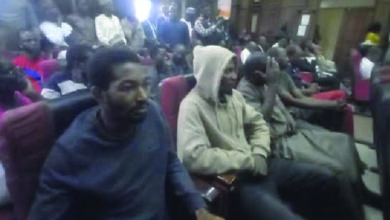Women’s rights: 28th September – International Safe Abortion Day

Article from www.Socialistworld.net by Sonja Grusch, SLP (CWI in Austria)
September 28th is International Safe Abortion Day. The date originates from the Campaña 28 Septiembre, a campaign launched in Latin America and the Caribbean in 1990 for the decriminalisation of abortion. The Women’s Global Network for Reproductive Rights made September 28th an international day in 2011, and since then there have been actions around the world every year. In the past few years, the issue of abortion has become increasingly important again.
All the religious fundamentalists, the self-declared “prolife” activists and their co-thinkers in the governments – they were always there, but they seem to have gotten louder and more dangerous in the last years.
The facts: a dangerous situation for women
One out of three women will have an abortion in their lifetime – so it is “one of the most common medical procedures in the world” as Ruth Coppinger, Irish socialist, TD and Campaigner for Women’s rights, correctly says. But internationally, only a minority of states gives legal access to abortion. 25% of all women live in countries where abortion is banned and punished with prison or worse. 40% more live in countries where it is forbidden or only allowed in certain cases, or where access is difficult. And even where it is formally legal, in practice it is often difficult to get access and to get it affordably.
In Austria, a social democratic government made it legally possible to get an abortion in 1975 – but they did not take any steps to actually make sure that access is provided. The head doctor in a hospital can decide if abortions are provided – which means in practice, that hardly any hospital does. This includes public hospitals financed by state money and in those parts of Austria ruled by the Social Democrats. So the reality is that most women in Austria need to travel long distances and pay a lot of money to get an abortion.
According to the World Health Organization (WHO), about 22 million unsafe abortions take place every year, more than half of all abortions worldwide. 47,000 to 60,000 women die every year from an unsafe abortion – one woman every seven minutes. Many of these women already have kids, leaving them without a mother, and often without a father, as well. It is estimated that 8.5 million women have long term health problems because of unsafe abortions. It is a fact that banning abortions increases the number of dead and injured women.
The deadly policy of the so called “pro-life” movement
The figures also show that there is no correlation between the number of children per women and access to abortion. In countries with very strict anti-abortion laws, like Malta and Poland, women have 1.38 and 1.29 children on average. Meanwhile, in Sweden and Norway, where abortion is legal but there is a better social situation for women like access to affordable childcare, women have 1.89 and 1.78 children on average.
But there is a correlation between the access to contraception and abortion. The better sex education is in schools, and the easier and cheaper access to contraception is, the smaller the number of unwanted pregnancies and therefore abortions are. Austria, one of the few European countries where young and/or poor people have to pay the full price for contraception, has one of the highest rates of teenage pregnancies, according to experts. This shows the reactionary character of the so-called “pro-life” organizations in Austria: most of them are against sex education and contraception, as well. They stick to an ultra-conservative model of the family and see the role of women purely as giving birth to babies. They are not only linked to the churches and religious organizations, but also to the far-right and fascists. The frequently play down the Holocaust and use anti-Semitism. They argue for the need of more white Christian babies as opposed to refugees and (Muslim) immigrants. In the “pro-life” marches, fascists and Nazis not only take part, but physically attack pro-choice activists. In the US these radical anti-abortion activist not only threaten but actually kill the staff of clinics that provide abortions.
And these are not just some disturbed individuals. This is frequent and rooted in the reactionary character of the whole “pro-life” movement concept. The truth is the so-called “pro-life” movement, financed by churches, conservative and reactionary organizations, is responsible for unwanted pregnancies and for women dying from unsafe abortions. They are killers.
Why are they getting stronger?
If the “pro-life” forces were only some people carrying candles and crosses, they could be ignored. But they influence day-to-day politics. Under their influence, the US representatives at the UN Children’s Summit blocked all formulations that might be interpreted as accepting abortion for very young pregnant girls. In 2012 they registered a European Citizens’ Initiative “One of us” that collected nearly two million signatures in Europe. Their target was to stop EU funding for Planned Parenthood structures. The pressure was so strong that the EU stopped a planned decision of the EU-parliament for a European “right of abortion”. Such a decision would have helped millions of women in places like Poland, where abortion is de facto impossible, or in Malta, where abortion is denied even if the life of the woman is in danger.
Trump, in order to please ultra-conservatives voters, stopped funding for international organizations that help with contraception and dare to mention abortion as an option. This leaves millions of women in Africa and Asia without access to contraception, medical help or condoms to prevent AIDS. The question of abortion also shows how capitalism and its ideological base – although sometimes contradictory – is a barrier for the development of mankind.
In 1980, the first abortion pill was developed – a far easier and cheaper way for women to have an abortion, which can save the lives and health of hundreds of thousands of women, especially of those who have no access to doctors and clinics. But its acceptance and legalization took a very long time in a number of countries, even in those where abortion provided by a doctor is legal. In many countries access is still linked to seeing a doctor, which is unnecessary from a medical point of view. For reactionary forces controlling female bodies and enforcing the traditional family structure is in this case even stronger then the profit interests of the pharmaceutical industry, although it still makes its profit through women buying it illegally and therefore at a higher price.
The growing influence of these fundamentalists reflects economic, and following from this, political change. The traditional family is of extreme importance for the ruling capitalist system. Not only does it provide unpaid labour (mostly from women) but it also stabilizes the ruling system that is increasingly under pressure and questioned by millions of people worldwide. Under capitalism the ruling class generally gives the family the role of helping to reproduce the bourgeois state: producing the next generation of obedient, willing citizens and workers, as well as the model of authority and suppression.
Capitalist politicians are not necessarily all reactionary in relation to their view of women or the family. But the conservative backlash fits into their policy. The “family” is propagated in election campaigns, “women magazines” and the media – maybe sometimes in a more modern style but basically in its traditional form. The politicians cut funds for health, care and education. Women are driven out of the workforce. They once again increasingly have to do all the care work that is cut by neo-liberal policies without pay. If the so called “pro-life” fundamentalists strengthen the idea of the “traditional” family, then this gives the ideological support to the neoliberal policy. In Austria this is reflected by one of their slogans “Die Wirtschaft ist gesünder durch Vater, Mutter, Kinder” (“The economy is healthier with father, mother, and children”).
Worldwide resistance
Historically the struggle for women rights and the struggle of the workers movement cannot be separated. It is true, that a bourgeois women movement exists and was and is often dominant. But the main gains for women were won together, in times of revolution and intense class struggle.
The Russian Revolution in 1917 not only gave women the right to vote, but legalized abortion and made steps towards the socialization of housework (including child care). That these rights were later taken back shows once again the reactionary character of Stalinism. The legalization of abortion in many of the advanced capitalist countries in the 1970s as a result of second wave feminism cannot be isolated from the civil rights movement and an international revolutionary wave. The post war boom that brought millions of women in paid work and made them active parts of the labour movement and of the lively class struggle at that time.
Today again we see a new international wave of struggles by women against sexism and violence, and for women’s rights. Women have fought for their rights, and they have experienced their strength. For a few years we have seen mass protests in India against rape involving women from different ethnic and social backgrounds. In Latin America, “not one more” (“Ni una màs”) is the battle cry of women in several countries against the killing of women. In Poland and Ireland, masses of women have taken to the streets and fought for the right to abortion.
The timing of this new wave is no accident – it goes hand in hand with an increased rejection of capitalism and its family concept and with an increase of class struggle. These struggles are not “side” struggles of minor importance, but must be linked to the class struggle and anti-capitalist movements. The right of women to control their bodies is part of the struggle of humankind to liberate its bodies from capitalist exploitation.
The struggle of the Polish women against the government’s attempt to make abortion completely illegal (it is illegal in most cases already, and access is extremely difficult in the remaining cases) was magnificent – but it stopped at its highpoint and did not go further onto the offensive, demanding easier access to contraception and abortion. It did not organize the tens of thousands on the street but sent them home. This resulted in the government passing another attack on women’s rights – since June 2017, Polish women need a prescription to get the morning-after pill, which makes its use in most cases de facto impossible. Polish socialists have been arguing that the struggle for women rights needs to be organized and have democratic structures that involve supporters and activists in the debates and decisions on what demands to make and steps to take. Beyond this it needs a programme linking the struggle for the right of women’s self-determination over their bodies with the struggle against capitalism, a system that benefits from the suppression of women.
Socialists from the CWI are part of this struggle all over the world from Chile to Ireland, from Poland to India, from the USA to Austria. Several sections and groups of the CWI like in Ireland, Sweden, Belgium, Quebec, Austria and other countries will be active on and around 28 September. We are participating in and organizing campaigns and activities, fighting for a socialist program that includes:
- Free access to contraception and abortion.
- A public health service that provides easy access to abortions in every region.
- A public education system that provides sex education for all.
- A public social system that provides free child care for all those who want to have children, as well as public housing and good jobs for all women so they can make decisions about having children without economic pressure.


